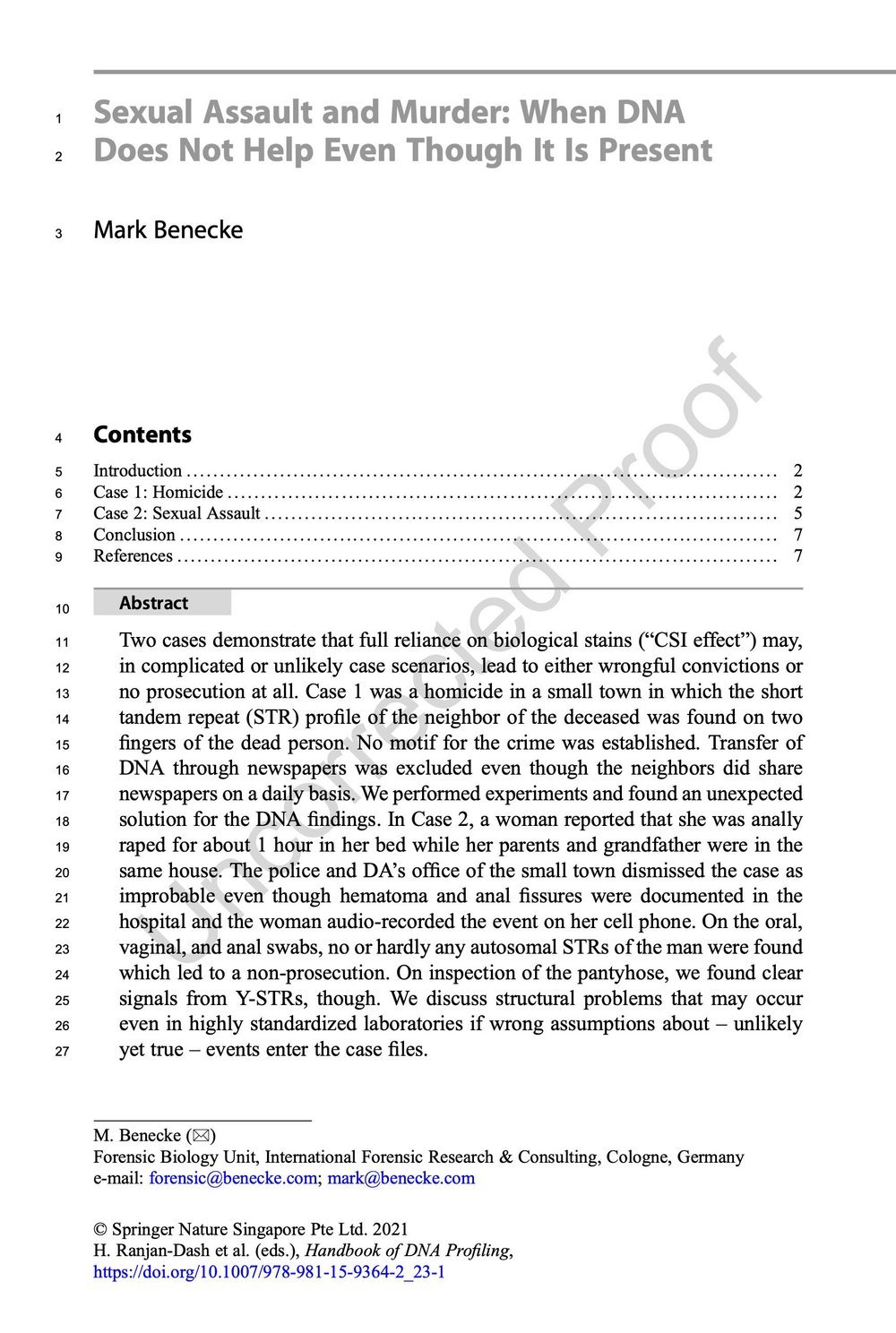Source: AAFS 2021, Criminalistics, Poster B47
Learning Overview: After attending this presentation, attendees will understand why it is important to listen to the victim and relatives, who do not fully understand the objective DNA evidence, but who point in a relevant direction relating to procedural failures of police and crime labs.
Impact on the Forensic Science Community: This presentation will impact the forensic science community by helping attendees learn how to understand claims of a victim’s family who seem to simply not understand the science in a “simple” rape case but in fact detect major flaws in the procedure.
In a technically “simple” routine case of rape (anal and vaginal intercourse over one hour; bleeding from anal lacerations; in home of victim; probably no ejaculation; male person not an occupant and not a relative), the case never went to court due to the absence of male DNA and the “impossibility to find out if sexual intercourse had taken place.” On the swabs, saliva from the victim but none of the possible offender was reported to be found by the federal state lab.
The woman and her family contacted a forensic research and consulting firm primarily because they wanted to know if no male DNA was to be expected after prolonged intercourse even without ejaculation and because, using the crime lab’s DNA results, the family had calculated that “25%” of the DNA profile of victim and possible offender matched in clean controls (oral swabs). They claimed that the swabs had been mislabeled at the hospital/by the police and half of the samples (originally ten samples: four vaginal, two anal, two oral, and two possible offender) were reported missing.
Since the possible sexual incident was recorded on a mobile phone (sound only), which was considered to be relevant, the case was re-examined and it was found that not only different systems for DNA typing had been used (this explained the “25%” match between male and female DNA contributions) but also the labeling of the swabs had initially indeed been wrong. After inspection of the woman’s underwear (different crime light sources; swabs), which had never been looked at before even though the possible rape was immediately reported to the police, DNA of the possible offender was found (Short Tandem Repeat [STR], Y-chromosome [Y]) on four locations of the pantyhose that had been worn by the woman before and after the intercourse and stored afterward without alterations. Since it is known that DNA may be transferred accidentally, especially at the waistband area, the original laboratory reports were checked for amounts and levels of DNA and to reconstruct the course of events on the relevant night.
This presentation shows how procedural problems may arise even in a highly standardized, controlled, and certified federal state lab if routine procedures are applied too firmly. The rape case and its stains had to be taken out of the routine line, new samples had to be taken by an external forensic biologist from evidence not looked at before, and the statements of the relatives had to be checked in the files as well as experimentally.
An important lesson was to listen to clients even if their statements initially seem to be incoherent.
Reference:
Murphy, Charlotte, June Kenna, Lorna Flanagan, Marce Lee Gorman, Clara Boland, and Jennifer Ryan. A Study of the Background Levels of Male DNA on Underpants Worn by Females. Journal of Forensic Sciences, 65, no. 2 (March 2020): 399-405. https://doi.org/10.1111/1556- 4029.14198
















